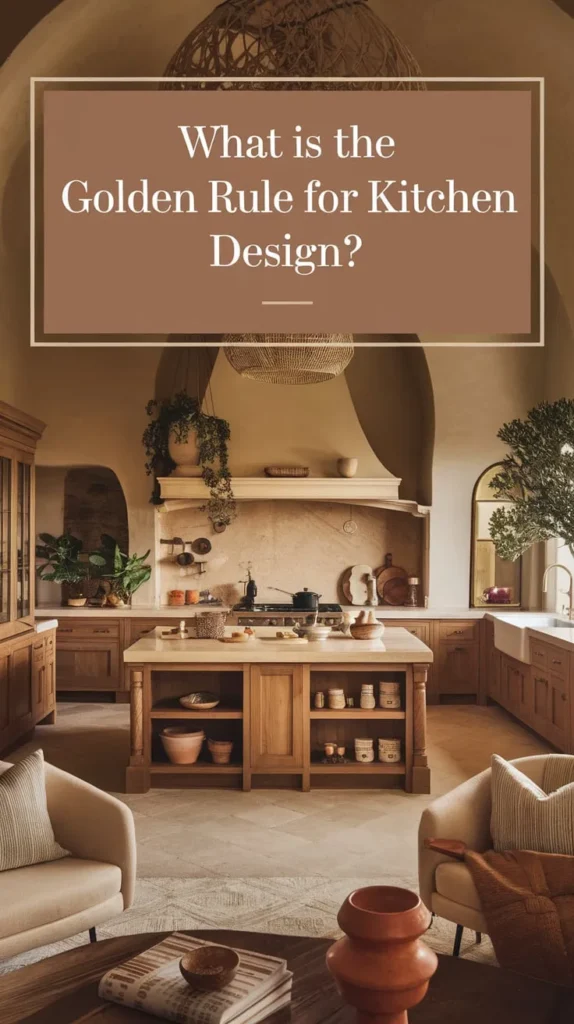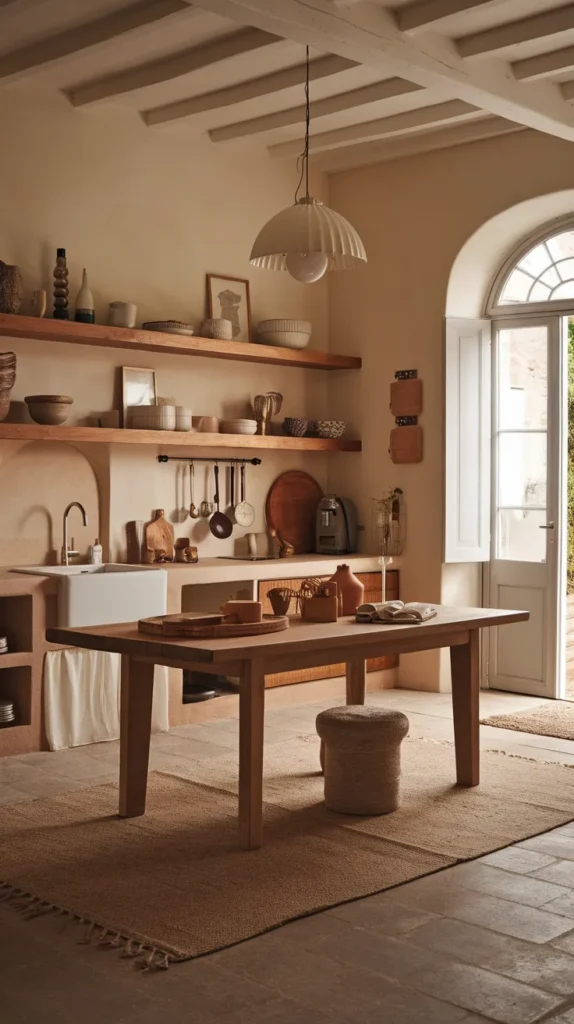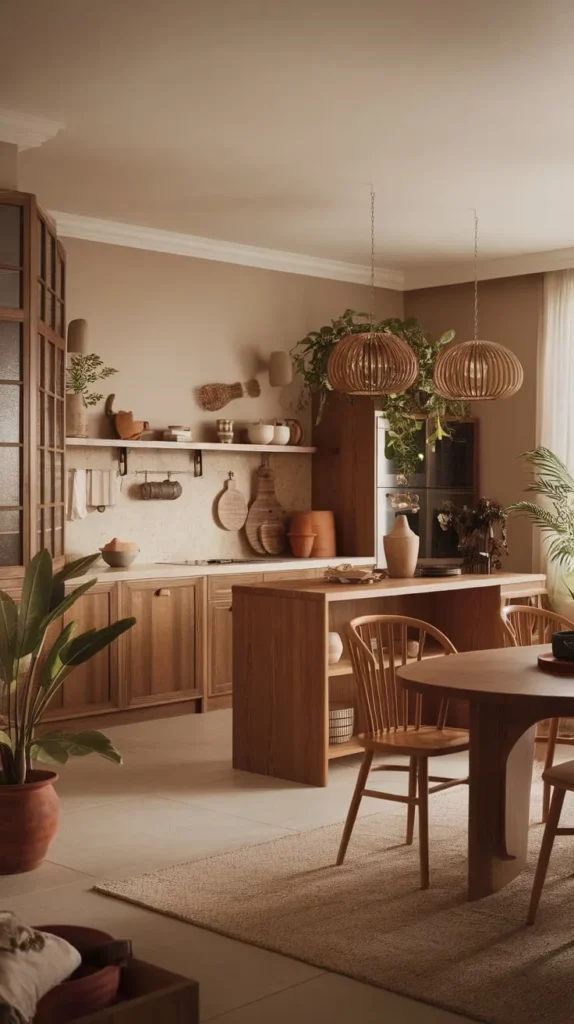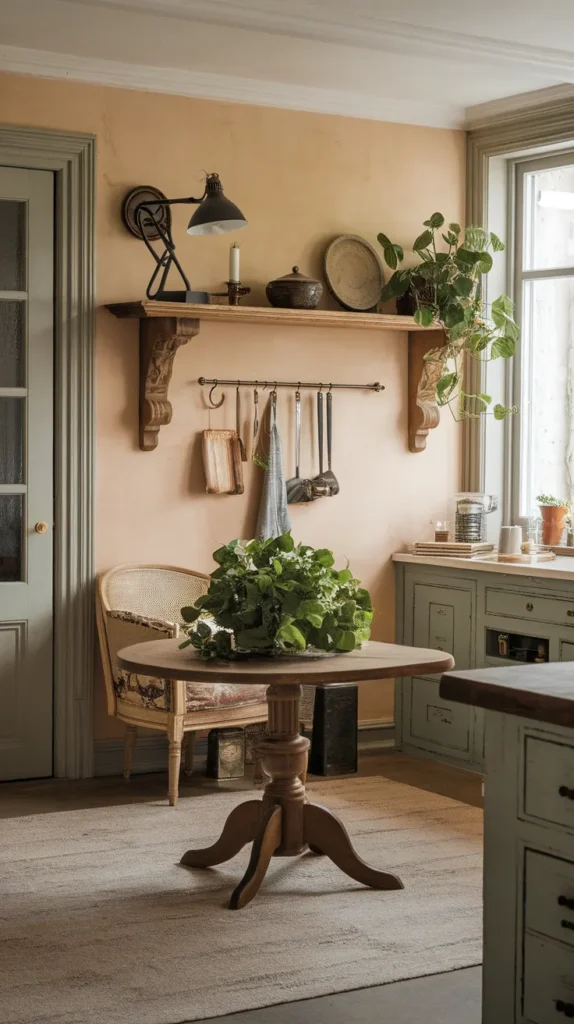
The golden rule for kitchen design is to prioritize functionality—ensuring every detail works together seamlessly for efficient use and effortless enjoyment.
There’s something undeniably special about a kitchen that isn’t just about style but about creating a space that works beautifully for your everyday life. When we design a kitchen, it’s not only about following the latest trends or making a bold aesthetic statement; it’s about ensuring that every element, from the layout to the finishing touches, serves a purpose. By keeping function at the forefront, you transform your kitchen into a well-oiled, harmonious space that feels both beautiful and utterly practical.
Below, we’ll explore the many facets of this golden rule and how you can apply it to your own kitchen design.
1. Function Comes First
The Heart of the Home
The kitchen is often called the heart of the home—and for good reason. It’s where meals are prepared, families gather, and creativity often unfolds. With this in mind, the primary focus must be on creating a space that supports your daily routines. When function is prioritized, the design naturally follows. That means every cabinet, countertop, and appliance should be chosen and placed with care so that they serve a clear purpose.
Designing with Efficiency in Mind
Central to functional kitchen design is the idea that nothing should be wasted—whether it’s space, time, or effort. A well-designed kitchen is efficient; it allows you to move effortlessly from prep to cooking to clean-up. This is where the classic work triangle comes in. The work triangle, a principle that connects the three main work areas (the sink, stove, and refrigerator), remains one of the foundational strategies in kitchen design. It helps ensure that the distance between these zones is optimized, reducing wasted steps and making your cooking experience more intuitive.
2. Layout and Flow: The Blueprint of Functionality
Embrace the Work Triangle
The work triangle is often cited as the backbone of functional kitchen design. When these three essential areas are placed in close proximity, you not only improve efficiency but also create a flow that feels natural. Imagine preparing your favorite meal: as you chop vegetables at the counter near the sink, you can easily transfer them to the stove without a long, exhausting trek. This careful planning allows for a smoother cooking process and, ultimately, more enjoyment in the space.
Open and Uncluttered Spaces
A clutter-free environment isn’t just aesthetically pleasing—it’s crucial for functionality. Open spaces promote better movement and reduce stress, whether you’re multitasking during a busy dinner or enjoying a quiet moment with a cup of coffee. Smart storage solutions, such as pull-out pantries, concealed cabinets, and well-organized drawers, keep everyday items out of sight yet easily accessible. This kind of thoughtful planning not only enhances the look of your kitchen but also makes it more user-friendly.
Zones and Stations
Think of your kitchen as a series of zones or stations, each dedicated to a particular task. For instance, you might have a prep zone with ample counter space near the sink and cutting boards, a cooking zone around the stove, and a cleaning zone close to the dishwasher and sink. By clearly delineating these areas, you create a more organized environment where each station supports a specific function, making your kitchen work as hard as you do.

3. The Marriage of Aesthetics and Utility
Minimalism Meets Warmth
One of the most enduring trends in kitchen design is modern minimalism—characterized by clean lines, neutral palettes, and an uncluttered atmosphere. But minimalism doesn’t mean cold or sterile; it simply means that every element is carefully chosen to enhance both beauty and functionality. In a kitchen, this might look like sleek, handleless cabinetry paired with warm natural accents such as wood countertops or stone backsplashes. The result is a space that feels both sophisticated and inviting.
Balancing Style with Practicality
Every appliance, light fixture, and piece of furniture should not only complement the overall aesthetic but also contribute to the functionality of the space. For example, a kitchen island isn’t just a focal point—it’s a versatile workspace that can serve as an extra prep area, a dining spot, or even a storage unit. When each component of your kitchen is selected with both form and function in mind, you achieve a design that is not only beautiful to look at but also a joy to use every day.
High-Quality Materials for Longevity
Investing in durable, high-quality materials is another key element of a functional kitchen. Surfaces that can withstand heavy use, from countertops to flooring, ensure that your kitchen remains efficient and beautiful over the years. Materials such as quartz, granite, and high-quality engineered wood are popular not just for their aesthetic appeal but also for their resilience. They are easy to clean, maintain, and will continue to perform well even in the busiest of households.
4. The Role of Lighting and Ventilation
Lighting: More Than Meets the Eye
Lighting is essential in any kitchen design. A well-lit space not only enhances the visual appeal but also improves functionality. Layer your lighting with a combination of ambient, task, and accent lights. Overhead lighting provides general illumination, while under-cabinet lights can help brighten up work surfaces. Pendant lights over an island or a dining table add a touch of style and focus the eye on key areas. This layered approach ensures that you have the right amount of light for every activity, from cooking and cleaning to dining and socializing.
Ventilation: Keeping it Fresh
A functional kitchen must also have proper ventilation. A good range hood or exhaust fan is essential to remove cooking odors, excess moisture, and pollutants from the air. This not only helps keep your kitchen smelling fresh but also contributes to a healthier, more comfortable cooking environment. Effective ventilation is often an overlooked aspect of kitchen design, but it plays a vital role in maintaining the overall functionality and ambiance of the space.

5. Personalizing Your Kitchen for a Truly Functional Space
Tailoring to Your Lifestyle
No two kitchens are exactly alike, and that’s why the best design is one that reflects your personal needs and habits. Whether you love to cook elaborate meals every day or prefer simple, quick breakfasts, your kitchen should be designed to support your lifestyle. Consider what works best for you: do you need more counter space for meal prep, or is a large dining area more important? Personalizing your layout to suit your daily routines ensures that your kitchen is not only functional but also a joy to be in.
Mixing Modernity with Tradition
For many, the most appealing kitchen design marries modern conveniences with traditional touches. This blend can create a space that feels both cutting-edge and warmly familiar. For example, a state-of-the-art induction cooktop might be paired with a farmhouse sink, combining the best of both worlds. This approach allows you to enjoy modern efficiency while still honoring the comfort and character of classic design elements.
The Importance of Ergonomics
Ergonomics—the science of designing environments for human efficiency and comfort—is crucial in kitchen design. This means considering factors such as counter height, the distance between appliances, and the ease of movement throughout the space. An ergonomically designed kitchen minimizes unnecessary steps and reduces physical strain, making cooking and cleaning less tiring and more enjoyable. Even the smallest adjustments, like the placement of a pull-out trash bin or the height of a shelf, can make a significant difference in how comfortable your kitchen feels on a daily basis.
6. Bringing It All Together: The Golden Rule in Action
A Cohesive, Functional Sanctuary
When you focus on functionality first, every decision—from the layout and storage solutions to the materials and lighting—naturally supports the overall design. This is the essence of the golden rule for kitchen design: it isn’t about chasing trends or aiming for perfection in aesthetics alone, but about creating a space where every element serves a purpose and enhances your daily life. A well-designed kitchen is a sanctuary that not only looks stunning but also makes every meal preparation and cleanup task easier and more efficient.
Small Changes, Big Impact
Sometimes, it’s the small details that make the biggest difference. Upgrading your cabinet handles, adding a few smart storage solutions, or installing a modern, energy-efficient appliance can have a ripple effect throughout the space. These seemingly minor tweaks ensure that every inch of your kitchen works together to create a cohesive, user-friendly environment.
Design with Love and Intention
At its heart, a kitchen is a place where memories are made—from the simple joy of preparing breakfast on a sunny morning to the laughter-filled gatherings around the dinner table. When you design your kitchen with love and intention, you create not just a room, but a living, breathing part of your home that nurtures you every day. This is why function must always come first: because a kitchen that works well invites you to enjoy it more, and when you enjoy your kitchen, you’re more likely to gather, create, and share those priceless moments.

Conclusion: Function as the Foundation of Beauty
In the realm of kitchen design, the golden rule is clear: prioritize functionality. When every element of your kitchen is designed with purpose and efficiency in mind, you create a space that is both stunning and supremely practical. Whether you’re embracing the timeless principles of the work triangle, incorporating natural materials for warmth, or selecting high-quality fixtures that stand the test of time, the focus remains on creating a kitchen that supports your lifestyle effortlessly.
Your kitchen is more than just a place to prepare food—it’s a dynamic space where life happens. By placing function at the heart of your design, you ensure that your kitchen becomes a sanctuary of efficiency, comfort, and beauty. So, as you embark on your kitchen design journey, remember that every detail should serve to make your life easier and more joyful.
Design with your needs in mind, keep it simple, and let your kitchen tell the story of your daily life—a story of practicality, warmth, and love. Function isn’t just a design principle; it’s the secret ingredient that transforms your kitchen into a vibrant, heartwarming space where every moment, from morning coffee to late-night snacks, feels just right.
Live well, cook joyfully, and let your kitchen be the space that nurtures every delicious memory.